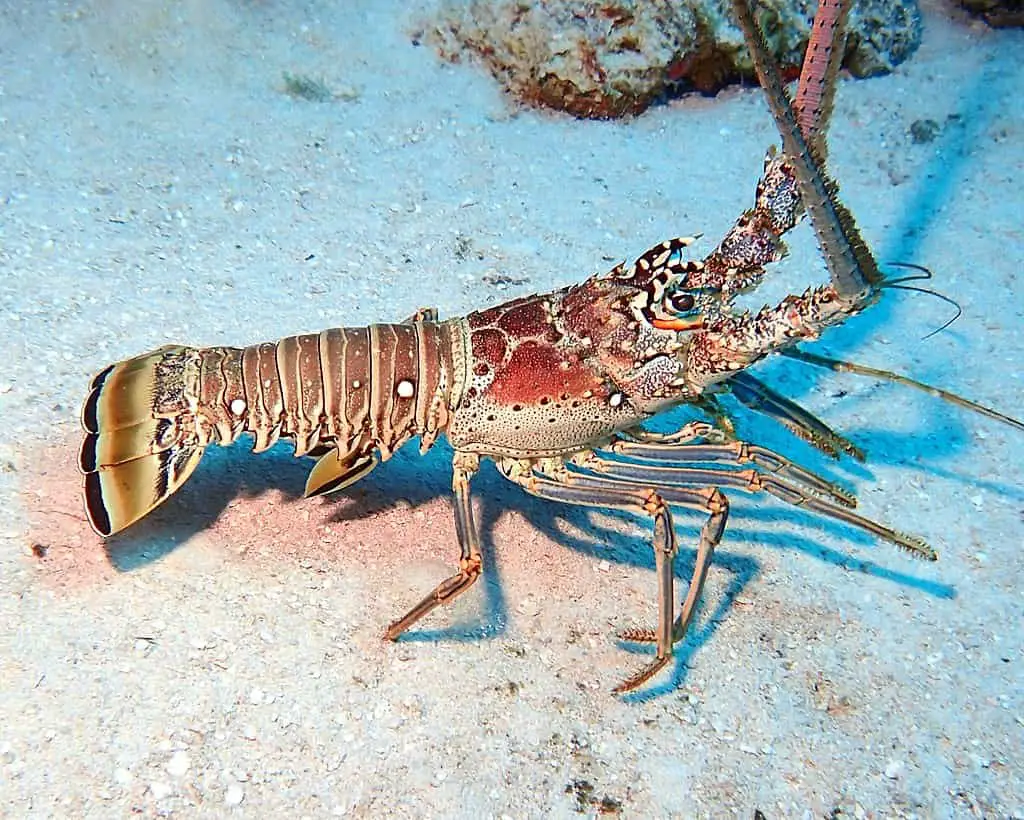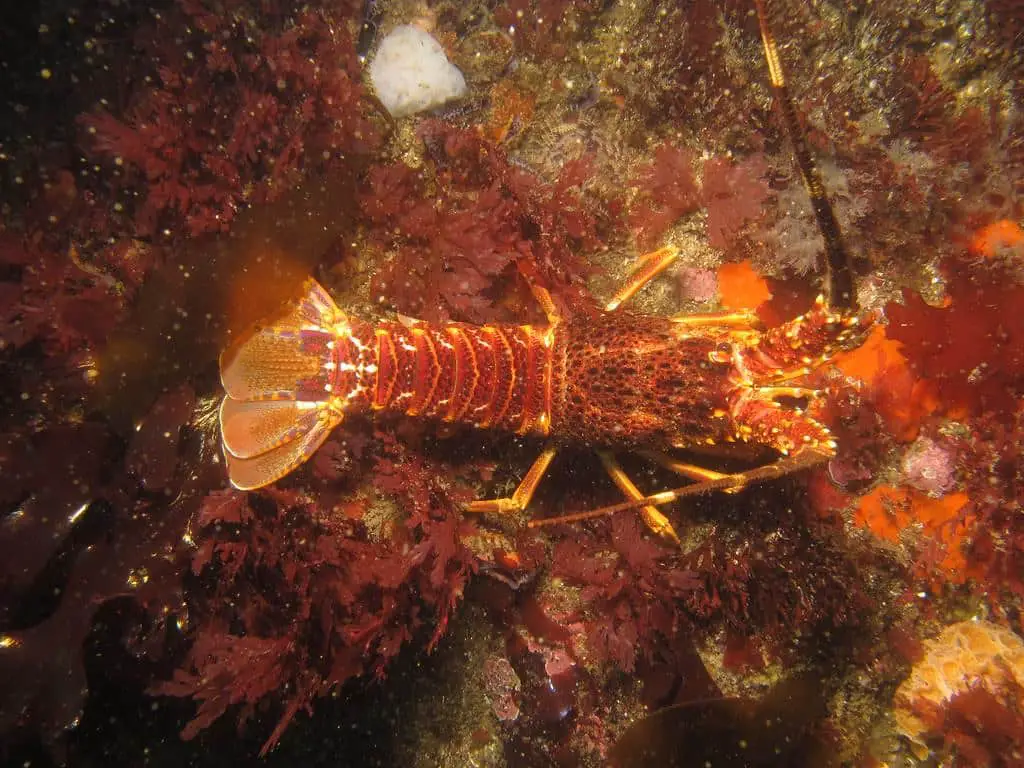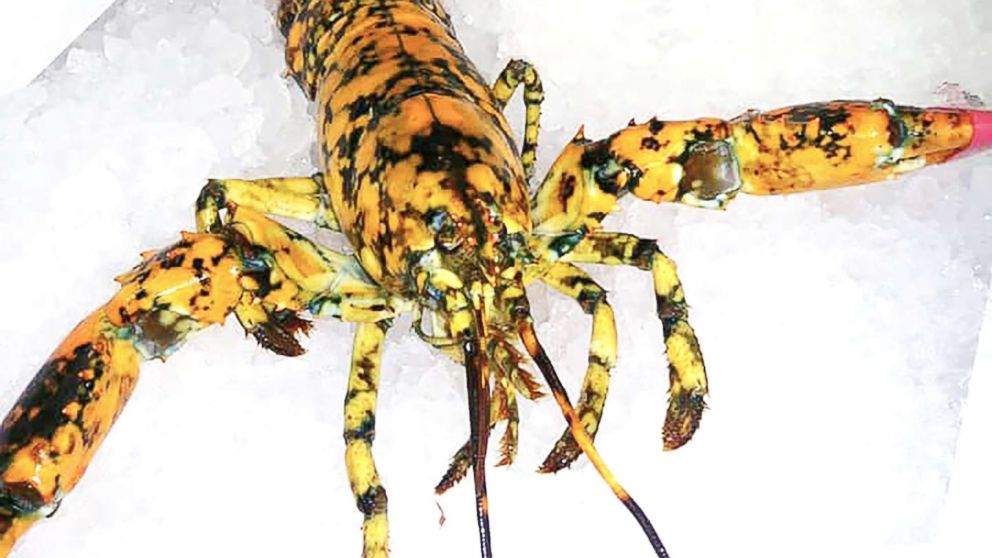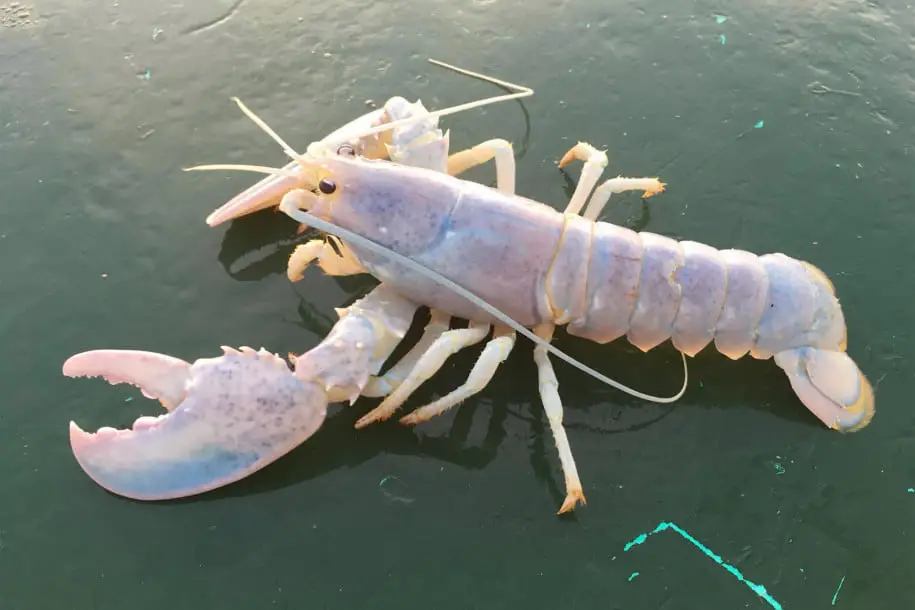Why Are Lobsters Different Colors? (Explained)
Bright red color lobsters that we mostly know from pictures are a big misconception. Many people who see live lobsters in the ocean for the first time are surprised by their variety of colors, such as dark brown, yellow, orange, blue, or even white.
Therefore, if you wonder why lobsters do have different colors, what colors, and why they turn red, in this blog post, we’ll talk all about that. However, let’s begin with a quick answer:
Lobsters are different colors because of the different amounts and distribution of the astaxanthin pigment. Lobsters have three layers of colors: red, blue, and yellow on top, which gives us different color variations and shades. Other factors that cause different lobster colors are genetics, diet, and shell hardness.
However, this certainly doesn’t tell the whole story. Below I’ll explain more about what causes different colors of lobster and why. Furthermore, I’ll explain why lobsters turn red, what colors they might be, and what’s the most popular and the rarest colors of lobsters. Read on!
Why are lobsters different colors?
Lobsters come in various colors because of different amounts and distribution of pigments, just like human skin! Lobster pigments, called astaxanthin, can give them different shades of green, blue, and yellow. Humans’ pigment is called melanin which changes our skin to shades of white, brown, and black.
Below, you’ll find a description of each factor that can influence lobsters’ color:
Pigments
So as I mentioned, pigments are the main reason why lobsters get their color. But how exactly does this work? Lobsters eat a red pigment in their plant food called astaxanthin. This pigment is stored in an animal’s skin, just underneath the hard shell.
However, over time, the pigment migrates into the shell, where different shell proteins change the pigment to store it, changing its color. This creates a lobster-colored layered cake: the red skin at the bottom, a layer of blue pigment in the bottom of the shell, and orange on the outside of the shell.
Interestingly, we mostly see brown (one of the most popular lobster colors) because our eyes can’t see all the layers at the same time.
Some lobsters might even lack pigment, which causes them to become white, or albino. This is similar to what happens in humans and other animals when they’re born with a mutation that leads to albinism. However, white lobsters are extremely rare to find.
Genetics
Genetics is the main factor that defines the specific color of the lobster, just like in humans. Sometimes, some genetic mutations cause lobsters to have their unique colors. For instance, some blue lobsters are the result of a single mutation of one piece of the SNA of American lobsters.
What happens during mutation is that it causes an overproduction of a particular protein. As a result, the lobster has a bright blue pigment instead the typical mix of pigments that give the greenish-brown.
The hardness of the shell
Apart from genetics, another factor that influences the color share of the lobster is the hardness of the shell. When lobsters grow, their shell (exoskeleton) doesn’t expand. Therefore, they need to shed in order to grow in the process called “molting”.
The new exoskeleton is usually softer, cleaner, and has fewer scars than the old one. Hard shell lobsters are generally darker in color, and in contrast, lobsters with soft shells are usually lighter in color.
Diet
Another factor is their diet. For instance, when a natural-colored lobster feeds on squid, it might turn blue. However, if a blue lobster (not genetically blue) is put in a holding system, its color will become normal over a while due to a dietary deficiency.
If lobsters avoid a diet full of astaxanthin, usually found in algae, seaweed, or shrimp, they will turn completely white, missing the pigment. Similarly, the unicorn-colored lobster found in Canada had a rainbow of pastel hues and lacked color. Its low-pigment food source most likely caused this.
Why do lobsters get red?
Unfortunately, most people only know how the cooked lobsters look, which are bright red in color. But, why do lobsters turn red when cooked? When lobsters are boiled in a pot of water, the heat breaks down the top layers of blue and orange proteins. As a result, it leaves only the bright red skin visible.
Interestingly, around one in ten million lobsters are naturally red. They’re not considered mutants, but they just have more red pigments than others. An example of a naturally red lobster is a Cape Lobster that lives off the coast of South Africa.
What colors are lobsters?
As you probably may know, lobsters have many different colors, but what colors exactly? Let’s start with the spiny lobsters – lobsters without front claws. Spiny lobster species are among the brightest patterned animals in the sea. They display colors of green, black, white, yellow, and pink. They’re also patterned in lines, bands, and stripes.
Many species can also have bright markings on the top side of their tail. However, typically, lobsters are dark greenish or brown colored, so they blend in with the ocean floor easily. Most American Lobsters are dark orange as well, but several patterns and colors, such as blue, were found as well.
The northern lobster that lives in the north-eastern Atlantic Ocean and the North Sea, including Norway, is mostly pale orange. There weren’t many different color variations of this species found, which is probably due to their food availability and variety.
What’s the most popular color of lobsters and why?
The most popular color of lobster is dark brown, which helps them to adapt to their natural environment. Like all marine animals, they use their color to camouflage to easily blend with the sand and rocks on the bottom of the ocean, where they typically live.

If lobster were yellow, it’d stand out so much and be very easy to spot by the predators. However, some lobsters are yellow or other bright colors. Interestingly, most colorful and bright lobsters live in coral reefs surrounded by many colors.
For instance, a reef lobster that lives on reefs in the Indo-Pacific, the Caribbean, and warmer parts of the Atlantic Ocean is mostly brightly colored, with stripes, rings, or spots. This helps it to blend with its environment better.
What are the rarest lobster colors?
Blue lobster

Blue lobsters are very rare, but not the rarest. They mostly live on the Atlantic coasts of North America and Europe but also in other parts of the world. As I mentioned above, some blue lobsters are a genetic abnormality that causes them to produce more of a certain protein than others, but others are blue because of their diet.
Prevalence: 1 in 2 million
Red lobster

Normally lobsters are red only when cooked, which leads to a big misconception that lobsters are always red. However, there are some species that are naturally red, but it’s very rare to find. One of the species is a Cape Lobster that lives off the coast of South Africa.
Typically, these naturally red lobsters aren’t genetically mutated, but they just have more red pigment. Also, the diet rich in astaxanthin, such as shrimp, can cause lobsters to be even redder.
Prevalence: 1 in 10 million
Yellow lobster

Yellow lobsters are much rarest than blue or red. They were found in Massachusetts, where they were donated to the New England Aquarium. Another yellow lobster was caught by a fisherman on the coast of Maine and donated to the University.
Prevalence: 1 in 30 million
Bight orange

Bright orange lobster is as rare as yellow lobster, with the coloring only occurring once in every 30 million lobsters. They might be so rare because their bright color attracts predators, so it’s more difficult to survive.
Prevalence: 1 in 30 million
Calico lobster

Calico lobsters have a characteristic bright orange shell with a black pattern. Calico lobsters might be so rare also because their coloring makes them very visible to predators. One of these rarest species was found in Virginia, where it was rescued from someone’s plate in a restaurant.
Prevalence: 1 in 30 million
Split-Colored Lobster

Split-colored lobsters are extremely rare and have a very unique look. Instead of one unique color, they’re split in half and have two different colors. They come in various color combinations, but one of the most is black and orange with the common name “Halloween”. As their name implies, Halloween lobsters are half black or dark brown (a lobster’s normal color) and half orange.
Other rare color combinations are electric blue with orange in Seacoast Science Center in Rye. The cause of this split-coloring is most likely a complete cellular division of the lobster’s egg when is first fertilized.
Prevalence: 1 in 50 million
Cotton-candy lobster

Cotton-candy lobster is also called pastel lobster, and it’s possibly a sub-type of the albino. It has pale hues of blue and pink, and its low intensity of coloration is probably caused but its diet that that is low on pigment. One of the cotton-candy lobsters was found on the coast of Maine,
Prevalence: 1 in 100 million
Albino lobster (white)

White lobster is probably the rarest lobster in the world, with the occurrence of only 1 in 100 million lobsters. They are crystal white in color, which it’s caused by a genetic condition called leucism. This condition leaves lobsters with no pigment in their shells.
Prevalence: 1 in 100 million
You may also like:

Welcome to Bubbly Diver!
I’m glad to see you here. This blog is created for all marine creature lovers by a bubbly diver - me, Dori :)


